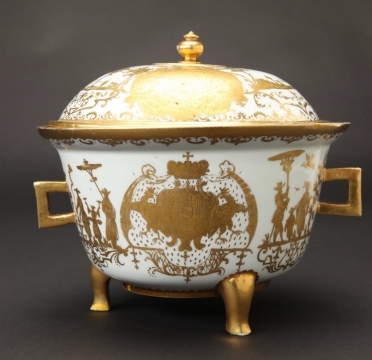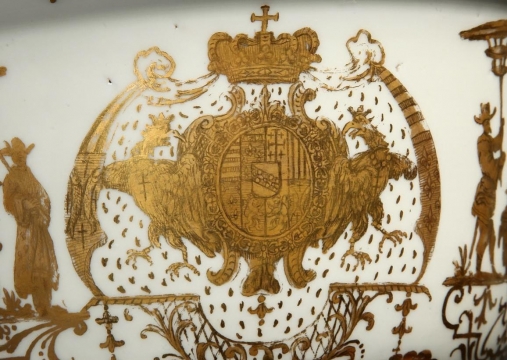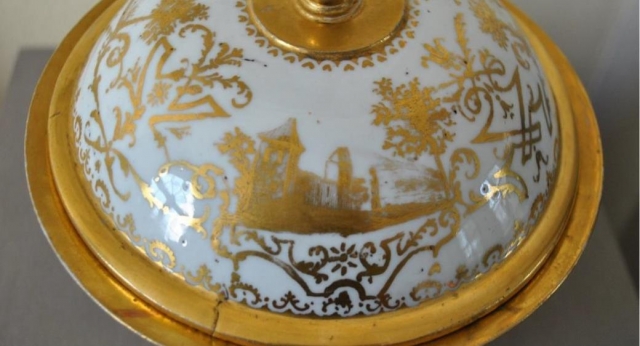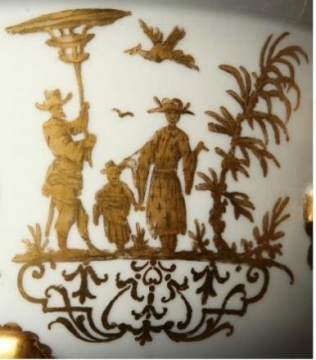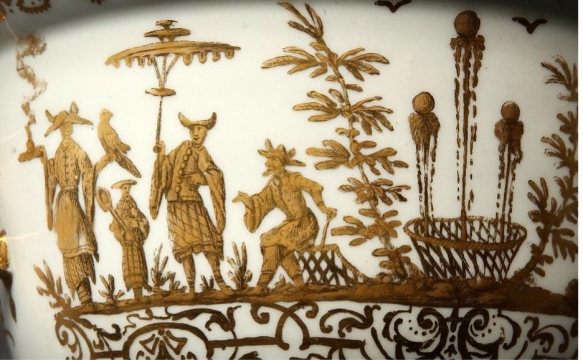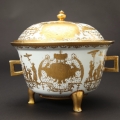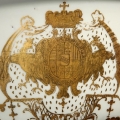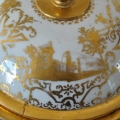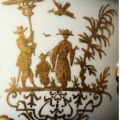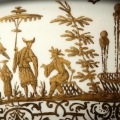c. 1722-1735
Type:
Bowl with three feet, two handles and a lid
Material / technique:
Meissen porcelain, decorated with gold
Dimensions:
Height 14.5 cm, diameter 17.5 cm, maximum width (with handles) 18.5 cm
Type of acquisition:
Acquired by the Comte Thierry de Looz-Corswarem Fund
Year of acquisition:
2023
Depository institution:
Brussels City Museum - Maison du Roi
